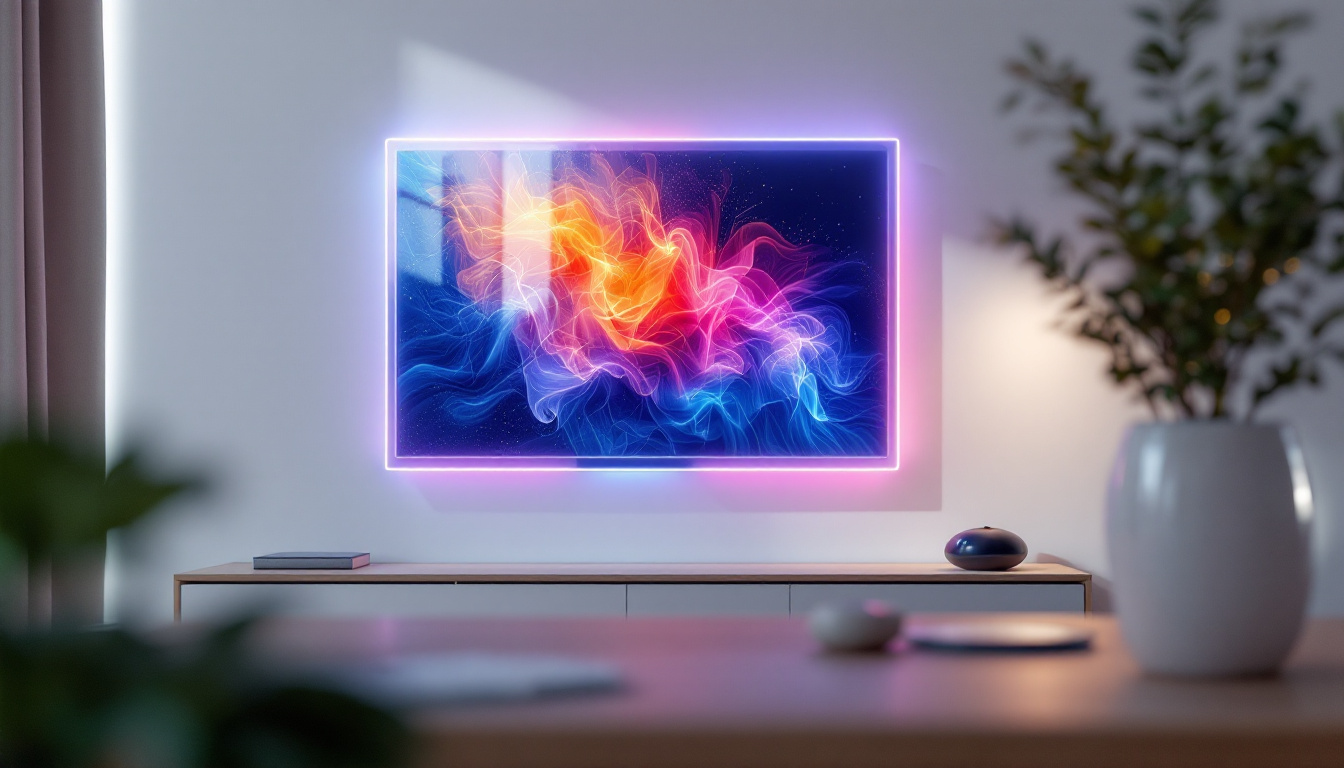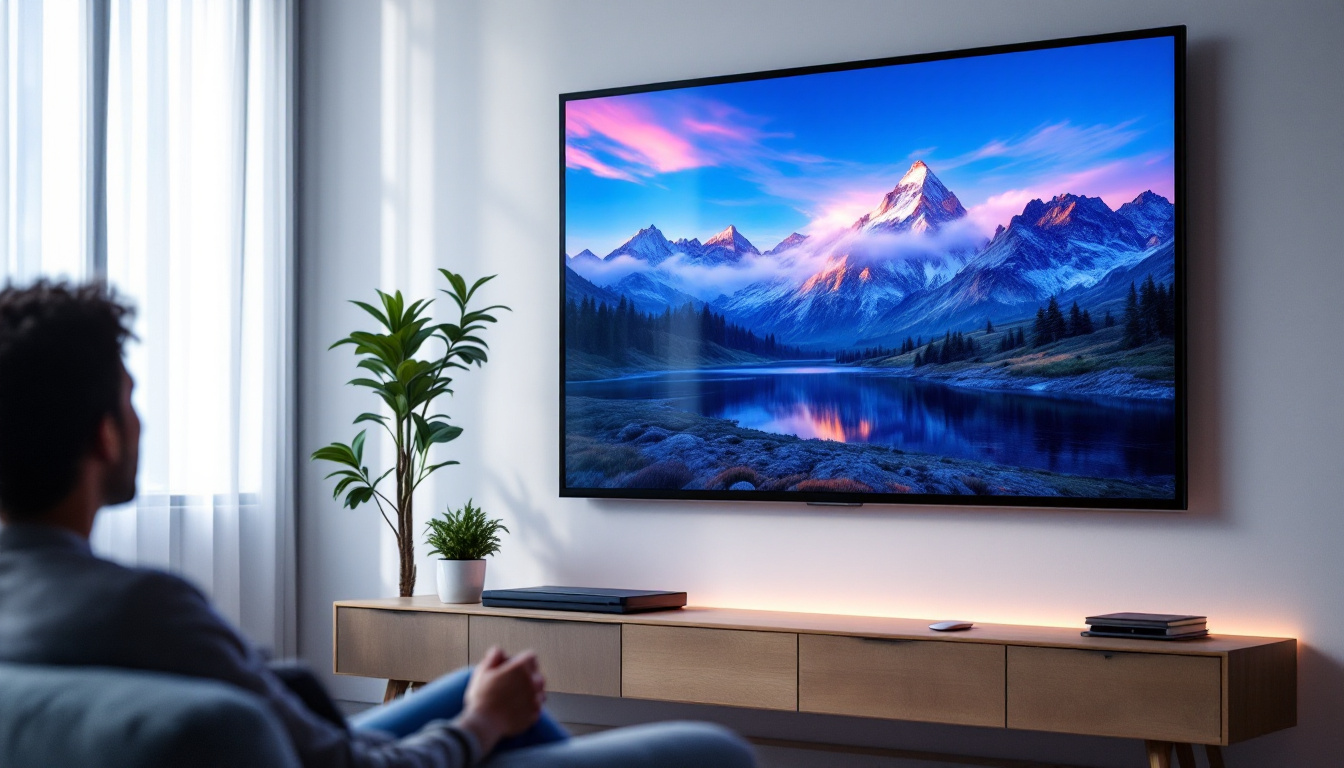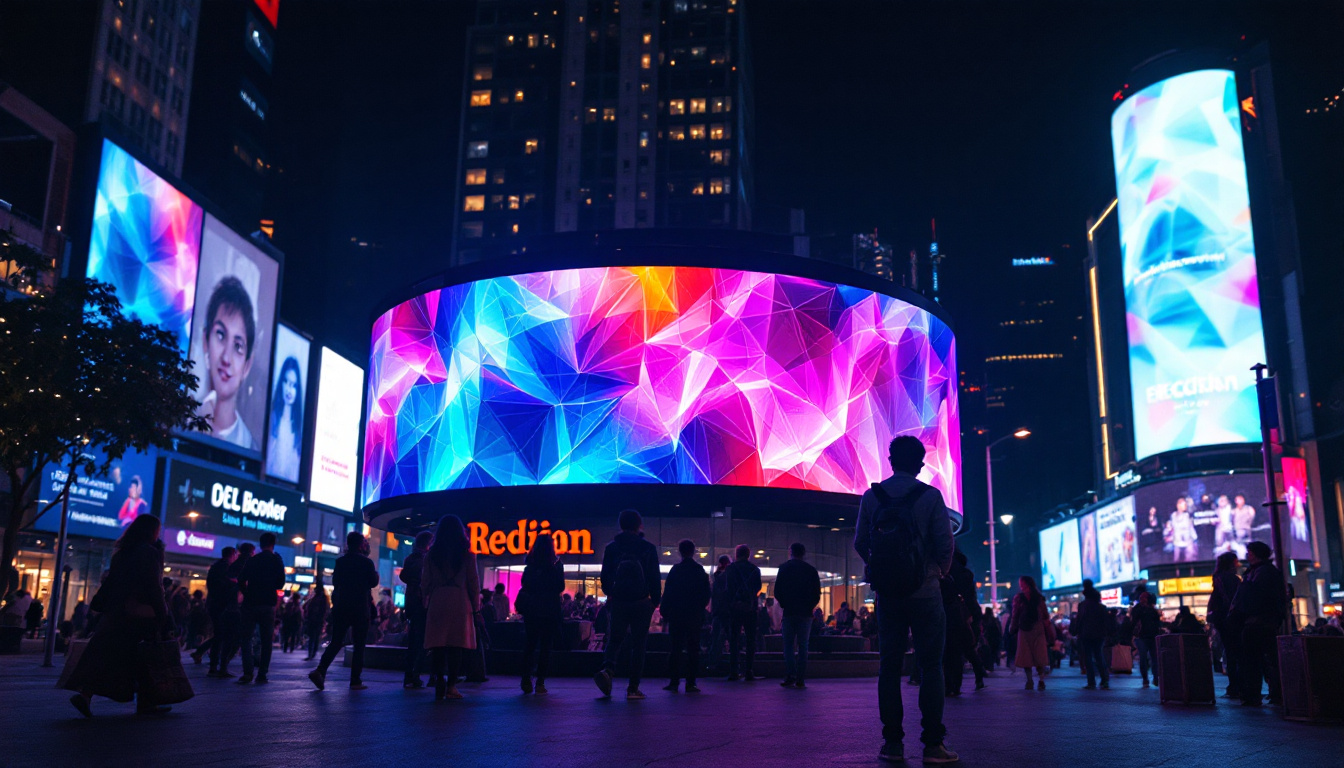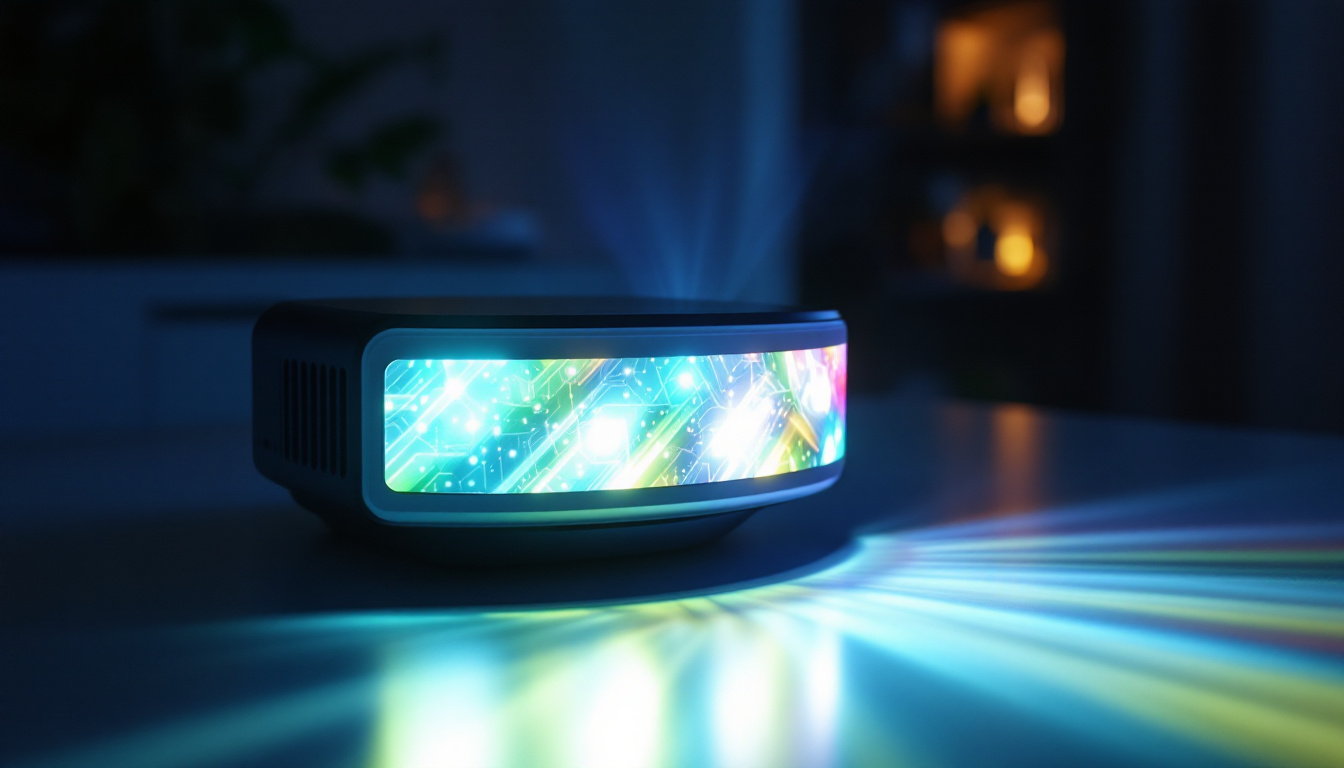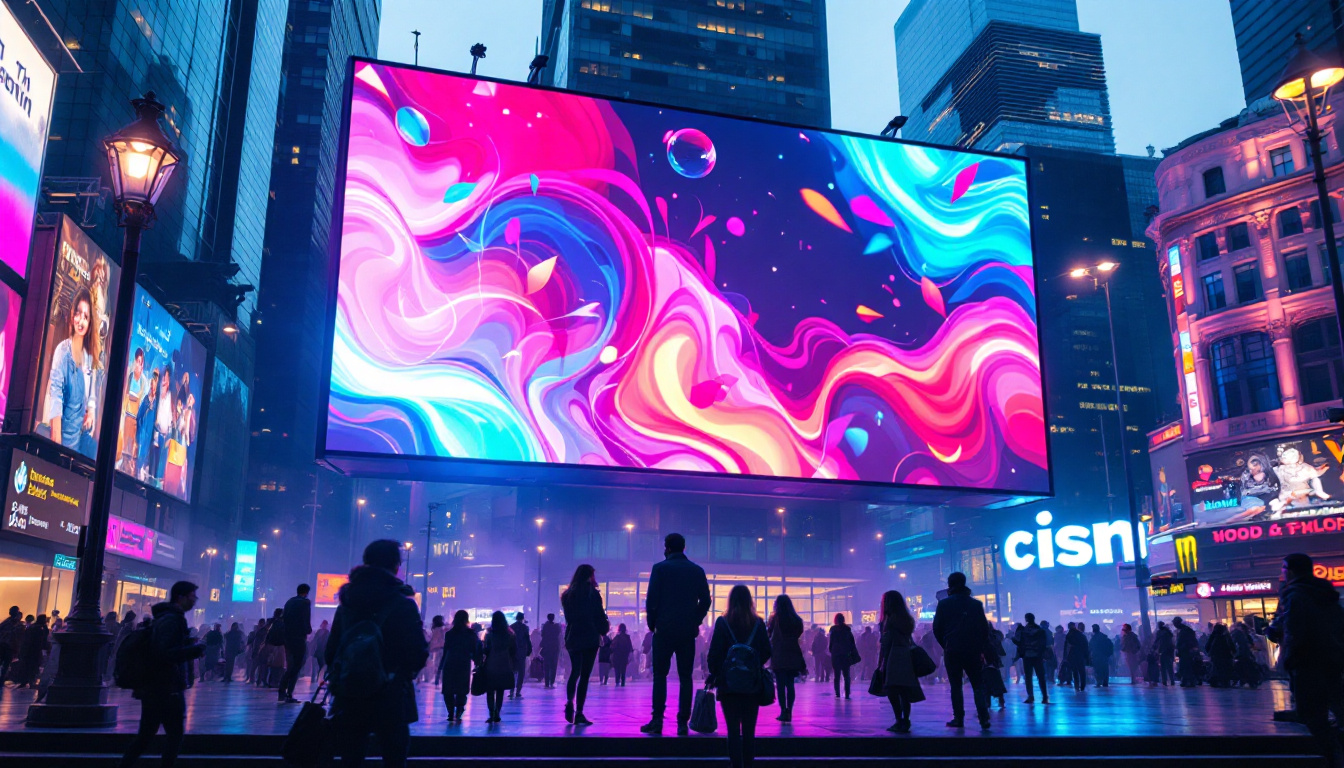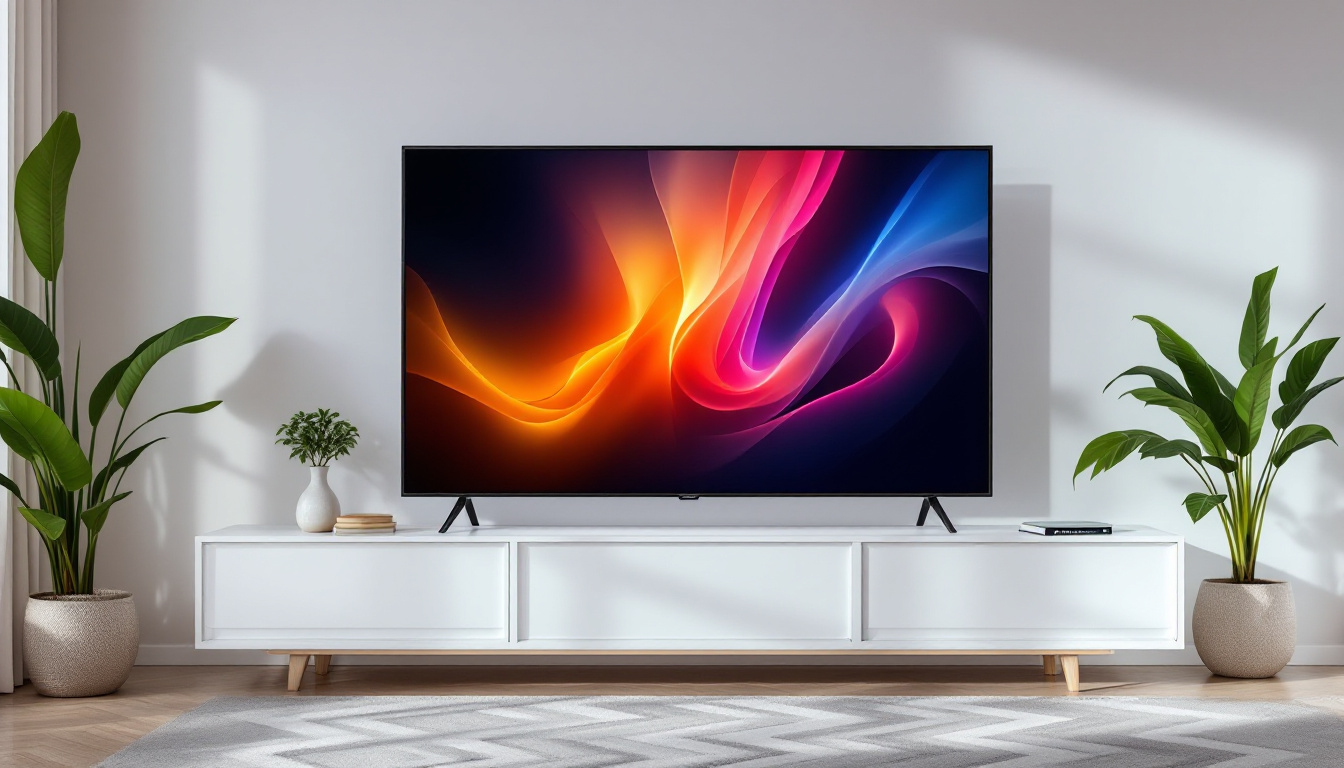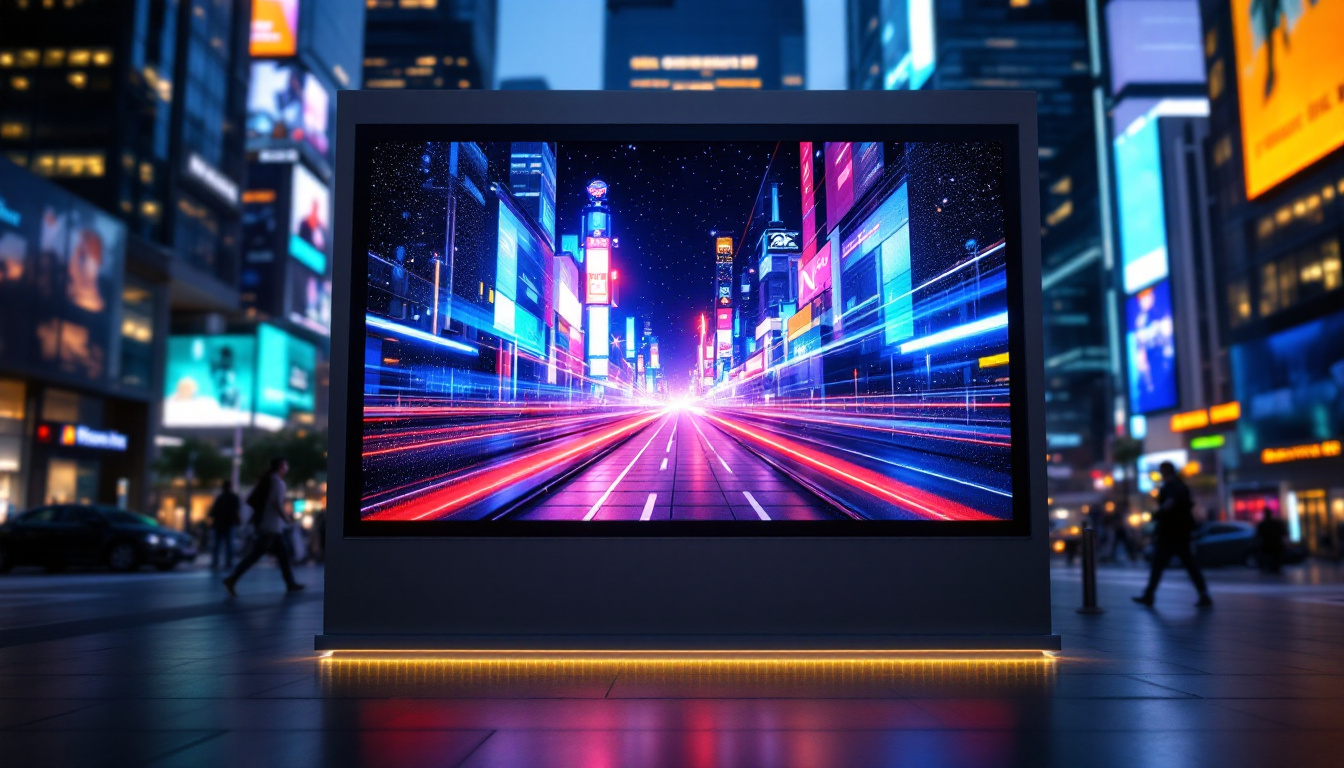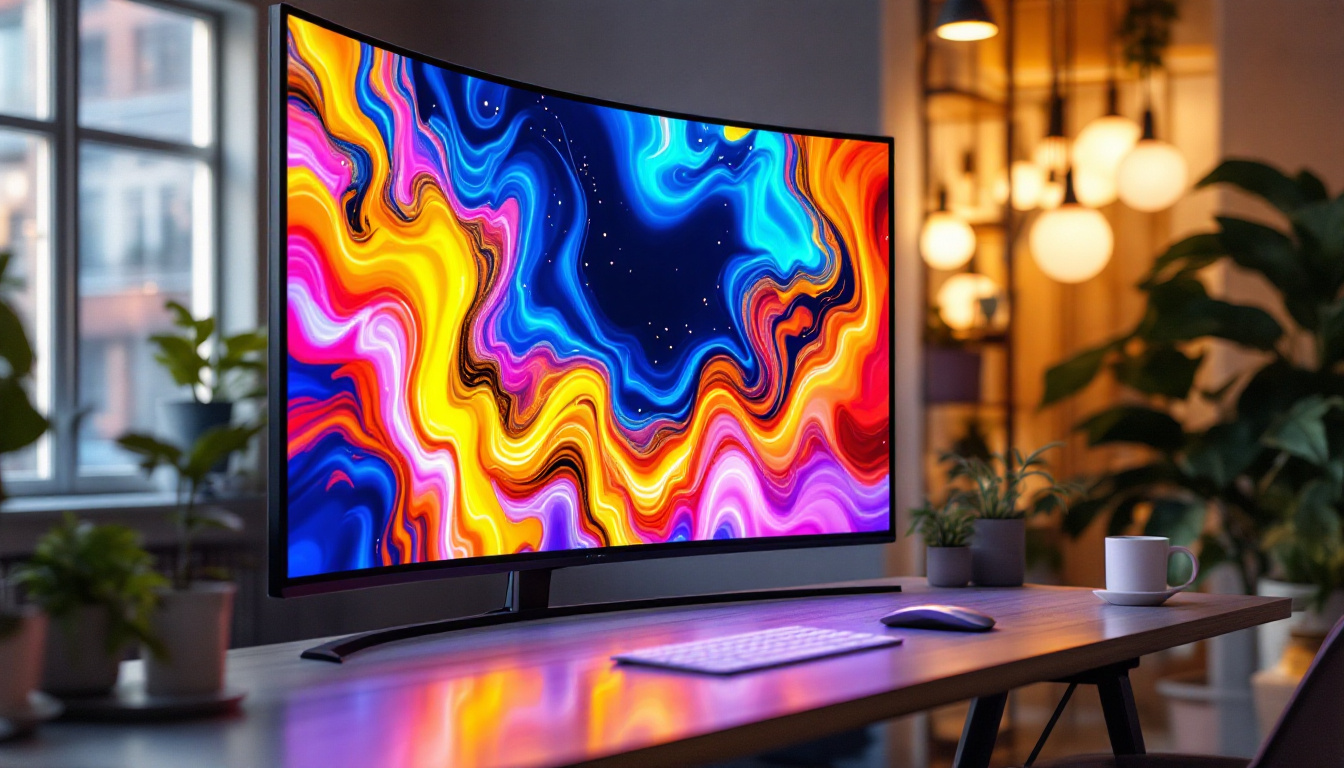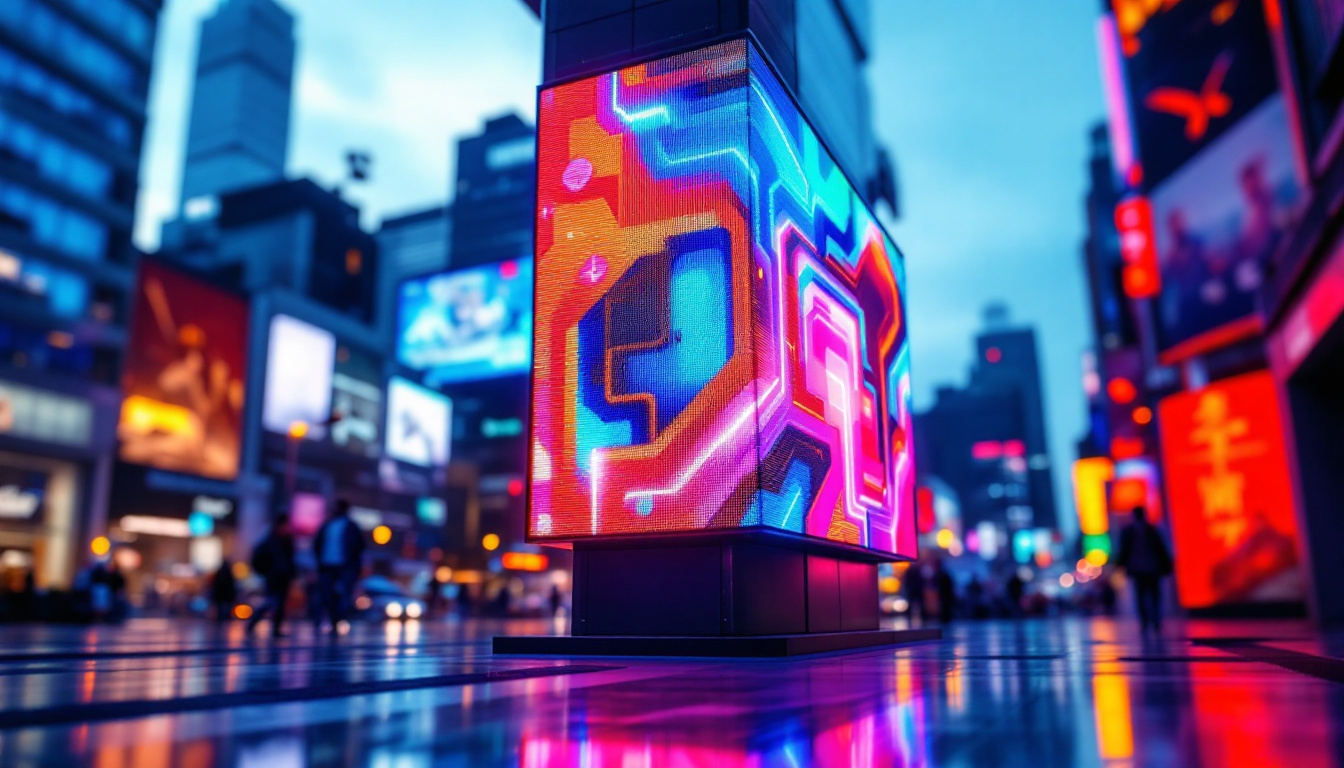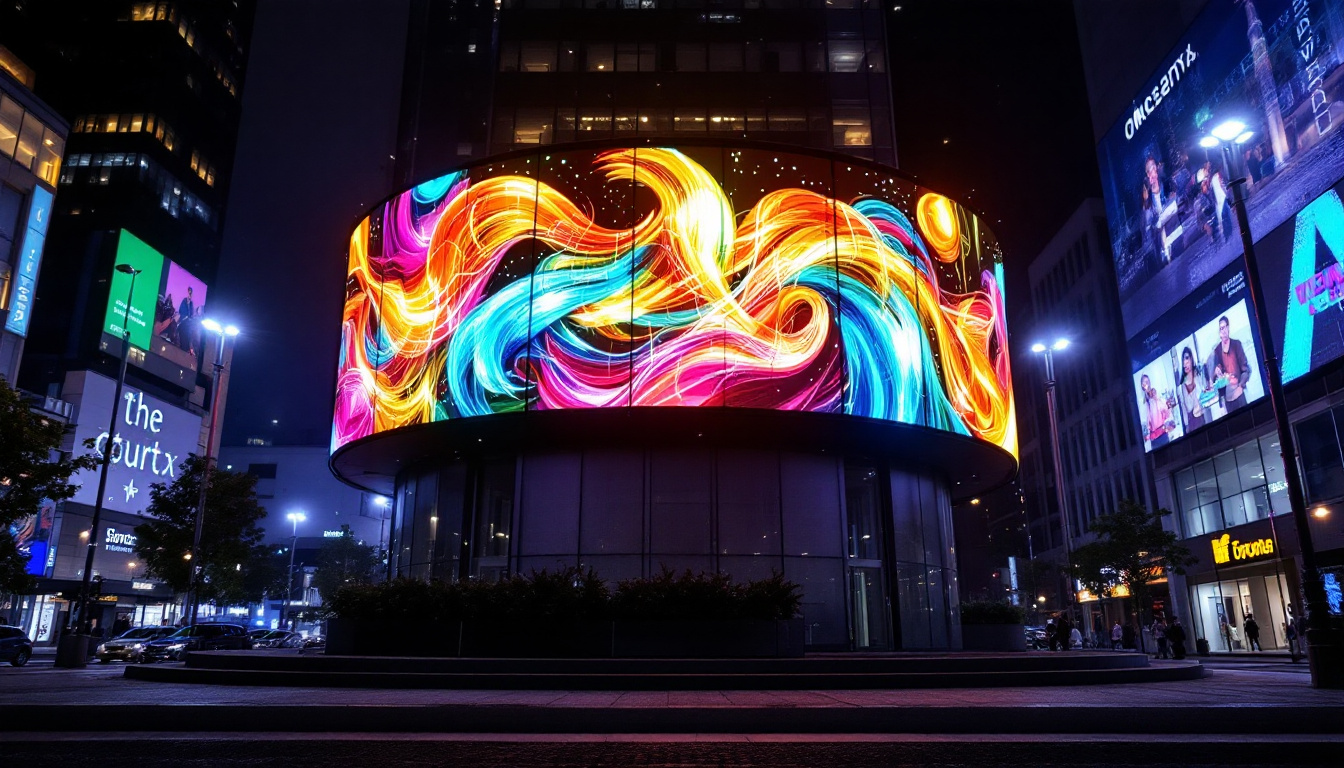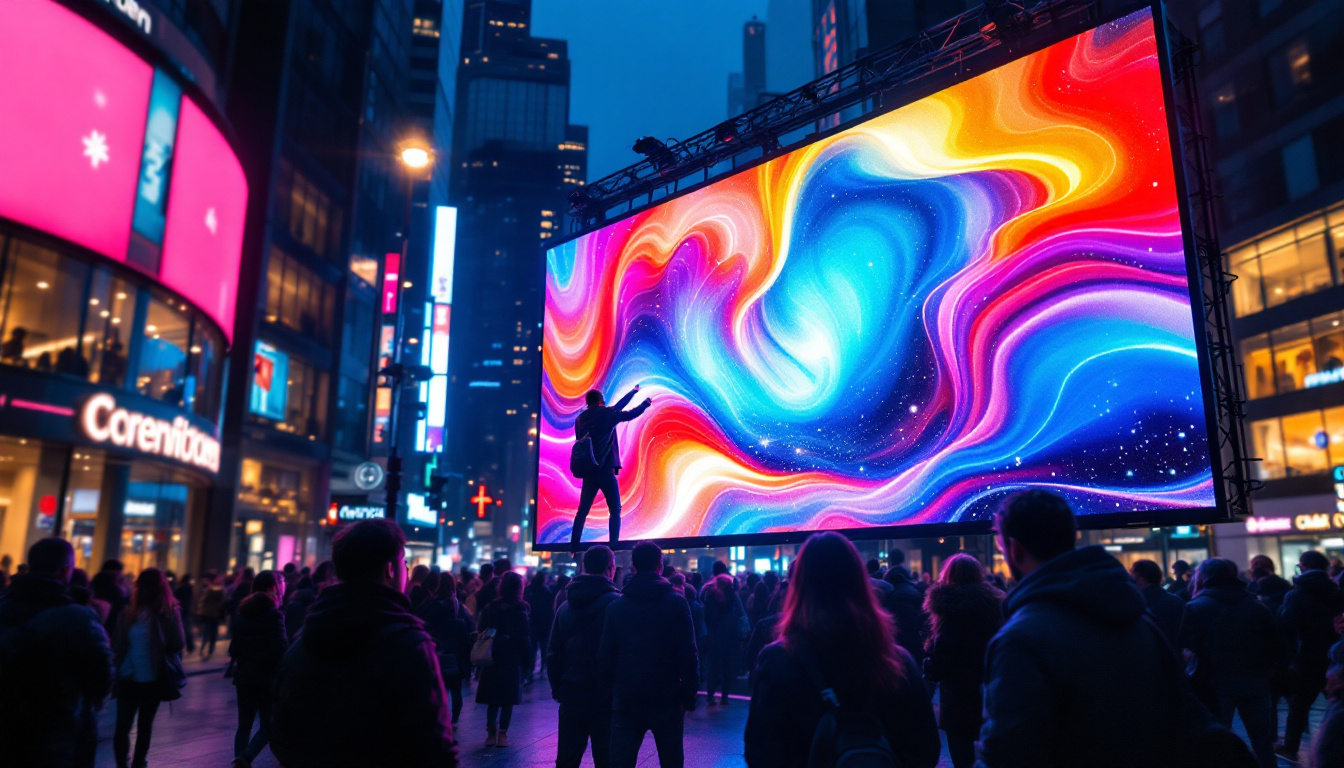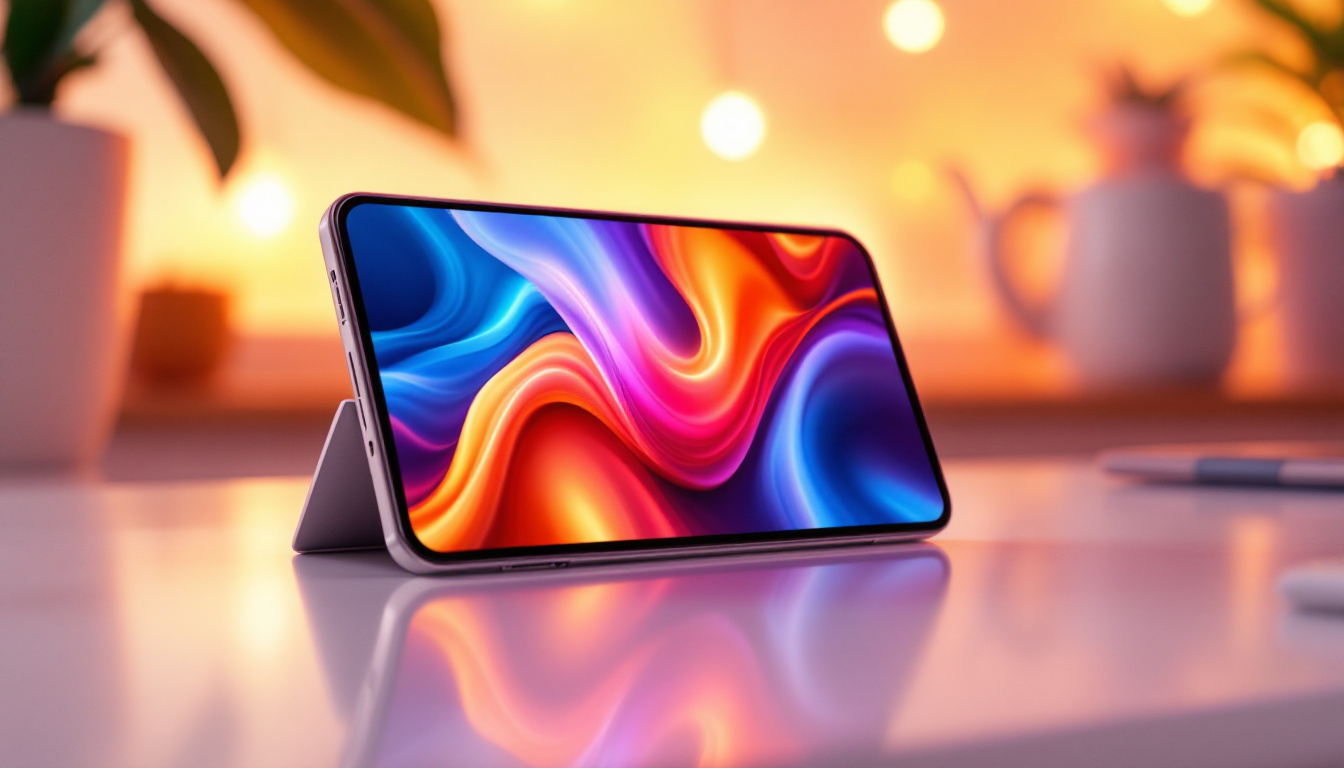Transparent OLED: LED Display Explained
In the ever-evolving world of display technology, transparent OLED (Organic Light Emitting Diode) displays have emerged as a groundbreaking innovation. These displays not only offer high-quality visuals but also allow for a unique blend of digital and physical environments. This article delves into the intricacies of transparent OLED technology, its applications, advantages, and future prospects.
Understanding Transparent OLED Technology
transparent OLED displays are a type of display technology that allows light to pass through while simultaneously displaying images. This dual functionality is achieved through the use of organic compounds that emit light when an electric current is applied. Unlike traditional LCDs, which require a backlight, OLED displays generate their own light, making them inherently more efficient. This efficiency not only enhances the visual experience but also contributes to lower energy consumption, making OLED technology a more sustainable choice for modern display applications.
The Science Behind OLED
At the core of OLED technology are organic materials that emit light in response to electrical stimulation. When a voltage is applied, electrons and holes recombine in the organic layers, resulting in the emission of photons. This process is not only energy-efficient but also allows for vibrant colors and deep blacks, which are essential for creating high-quality images. The ability to achieve true black levels is particularly significant, as it enhances contrast ratios and overall image quality, providing a more immersive viewing experience.
In transparent OLEDs, the design is slightly modified to allow for transparency. By adjusting the layers and materials used, manufacturers can create displays that are both functional and see-through. This is achieved by minimizing the thickness of the layers and using materials that do not obstruct light. The result is a display that can blend seamlessly into its surroundings, opening up new possibilities for applications in architecture, automotive design, and augmented reality. Imagine a storefront window that can display advertisements while still allowing customers to see the products inside, or a car windshield that can provide navigation information without obstructing the driver’s view.
Key Components of Transparent OLED Displays
Transparent OLED displays consist of several key components, including the substrate, organic layers, electrodes, and encapsulation. The substrate is typically made of glass or plastic, providing a sturdy base while allowing light to pass through. The organic layers, which include the emissive layer and the conductive layer, are where the magic happens—these layers are responsible for light emission and current conduction. The choice of materials for these layers is critical; advancements in organic compounds have led to improved efficiency and color accuracy, making modern displays more vibrant than ever.
Electrodes, usually made of transparent conductive materials like indium tin oxide (ITO), are placed on the surface to facilitate the flow of electricity. These electrodes must maintain transparency while providing effective conductivity, which is a challenging balance to achieve. Finally, encapsulation protects the organic materials from moisture and oxygen, ensuring the longevity and performance of the display. Innovations in encapsulation technology are continually being developed to enhance durability, allowing transparent OLEDs to be used in a wider range of environments, from outdoor displays to high-humidity areas. The ongoing research and development in this field promise to unlock even more exciting applications for transparent OLED technology in the near future.
Applications of Transparent OLED Displays
The versatility of transparent OLED technology opens the door to a wide range of applications across various industries. From retail to automotive, the potential uses are vast and varied.
Retail and Advertising
One of the most exciting applications of transparent OLED displays is in the retail sector. Retailers can use these displays to create captivating advertising experiences by overlaying digital content onto physical products. For instance, a transparent OLED screen placed in a storefront window can showcase promotional videos while still allowing passersby to see the products behind the glass.
This innovative approach not only enhances the shopping experience but also attracts customers by blending digital and physical elements seamlessly. Moreover, transparent OLEDs can be used in interactive displays, allowing customers to engage with products in new and exciting ways. Imagine walking into a store where a transparent OLED display provides real-time information about the clothing items on a mannequin, such as fabric details, available sizes, and pricing, all while maintaining a clear view of the actual merchandise. This level of interactivity can significantly boost customer engagement and drive sales.
Automotive Industry
In the automotive industry, transparent OLED displays are being explored for use in vehicle dashboards and heads-up displays (HUDs). By integrating these displays into the windshield or dashboard, manufacturers can provide drivers with essential information without obstructing their view of the road. This technology enhances safety by reducing distractions and allowing for a more intuitive driving experience.
Furthermore, the aesthetic appeal of transparent OLEDs can elevate the interior design of vehicles, creating a modern and futuristic ambiance. As the automotive industry continues to embrace smart technology, transparent OLEDs are likely to play a significant role in the evolution of vehicle displays. For example, these displays can also be programmed to adjust their opacity based on driving conditions; during nighttime driving, the display could become more transparent to minimize glare, while during the day, it could provide vibrant visuals that enhance navigation and entertainment options. This adaptability not only improves functionality but also contributes to a more personalized driving experience, making each journey more enjoyable and efficient.
Advantages of Transparent OLED Displays
Transparent OLED displays offer several advantages over traditional display technologies. Understanding these benefits can help businesses and consumers make informed decisions about their display choices.
Enhanced Visual Quality
One of the standout features of transparent OLED displays is their superior visual quality. The ability to produce vibrant colors and deep blacks results in stunning images that are difficult to achieve with other display technologies. Furthermore, the wide viewing angles of OLEDs ensure that the visual experience remains consistent, regardless of the viewer’s position. This is particularly beneficial in environments such as museums or galleries, where viewers may be positioned at various angles. The clarity and richness of the images can enhance the overall experience, drawing viewers into the content being displayed.
Energy Efficiency
Transparent OLED technology is inherently more energy-efficient than traditional LCDs. Since OLEDs emit their own light, they do not require a backlight, which significantly reduces power consumption. This energy efficiency not only lowers operating costs but also contributes to a more sustainable approach to display technology. Additionally, the reduced energy requirements can lead to less heat generation, which can be advantageous in applications where temperature control is critical, such as in automotive displays or portable devices. As consumers become increasingly eco-conscious, the sustainability aspect of transparent OLEDs is likely to resonate well, making them a preferred choice for environmentally-friendly initiatives.
Design Flexibility
The transparent nature of OLED displays allows for innovative design possibilities. Architects and designers can incorporate these displays into various environments without compromising aesthetics. Whether it’s a modern office space, a retail store, or even a home, transparent OLEDs can seamlessly blend into the surroundings while providing functional display capabilities. This design flexibility extends to interactive applications as well; for instance, retail environments can utilize transparent OLEDs to showcase products while maintaining visibility of the items behind the screen. This creates an engaging shopping experience that combines digital and physical elements, allowing brands to tell their stories in captivating ways. Moreover, the lightweight nature of OLED technology facilitates easy installation in unconventional spaces, further expanding the horizons for creative display solutions.
Challenges Facing Transparent OLED Technology
Despite the numerous advantages of transparent OLED displays, there are challenges that manufacturers must overcome to ensure widespread adoption. Addressing these challenges is crucial for the technology’s future success.
Manufacturing Complexity
The production of transparent OLED displays is more complex than that of traditional displays. The delicate nature of the organic materials and the need for precise layering make the manufacturing process challenging. As a result, achieving consistent quality across large-scale production can be difficult, leading to higher costs and potential supply chain issues.
Durability and Longevity
While OLED technology has made significant strides in terms of durability, transparent OLEDs face unique challenges. The organic materials used in these displays are susceptible to degradation from moisture and oxygen exposure. Ensuring the longevity of transparent OLED displays requires advanced encapsulation techniques and ongoing research into more resilient materials.
The Future of Transparent OLED Displays
The future of transparent OLED displays is bright, with ongoing research and development paving the way for new innovations. As technology advances and manufacturing processes improve, the potential for transparent OLEDs in various applications will continue to expand.
Integration with Augmented Reality
One of the most exciting prospects for transparent OLED technology is its integration with augmented reality (AR). By combining transparent displays with AR capabilities, users can experience a new level of interaction with their environment. Imagine walking through a museum where digital information is overlaid on physical exhibits, or navigating a city with real-time data displayed on your windshield.
This fusion of transparent OLEDs and AR technology could revolutionize how people interact with information and their surroundings, making everyday experiences more engaging and informative.
Potential in Smart Cities
As cities become smarter and more interconnected, transparent OLED displays could play a pivotal role in urban design. From information kiosks to interactive public transport displays, the integration of transparent OLEDs can enhance communication and accessibility in urban environments. These displays can provide real-time information while maintaining an open and inviting atmosphere.
Conclusion
Transparent OLED displays represent a significant leap in display technology, offering a unique blend of functionality and aesthetics. Their ability to merge digital content with the physical world opens up exciting possibilities across various industries, from retail to automotive.
While challenges remain in terms of manufacturing and durability, ongoing advancements in technology and materials are likely to address these issues. As transparent OLED displays continue to evolve, they hold the potential to transform how we interact with information and our environments, paving the way for a more integrated and visually stunning future.
Discover the Future of Visual Display with LumenMatrix
Ready to elevate your visual engagement? Embrace the cutting-edge technology of transparent OLED displays with LumenMatrix. As a pioneer in LED display innovation, LumenMatrix offers an extensive array of solutions, from Indoor and Outdoor LED Wall Displays to Custom and All-in-One LED Displays, including the revolutionary LED Transparent Display. Step into the future and transform your space with displays that captivate and communicate with unparalleled clarity. Check out LumenMatrix LED Display Solutions today and join the visual revolution.

